Model Risk Governance, a core part of what we do
A vital component of the 2008 crisis was the complexity of models used to manage assets. When the music stopped in 2008, the banks were not able to explain how the complex network of models combine to measure critical factors such as balance sheet valuation and capital. As a response, in 2011, the American OCC published SR 11-7 that outlines the principles of how financial institutions should manage their models. Since then, all banks have integrated Model Risk Governance (MRG) into their risk culture.
RiskFirst has a number of key banking clients, meaning the output from PFaroe is within the scope of their MRG. We wanted to set up a MRG framework to satisfy their requirements but noted that this would only ever be critically relevant to a small number of schemes. We also wanted to avoid a box-ticking exercise and wondered whether we could adopt the principles to improve the way we develop our models in a rapid and agile fashion.
RiskFirst approached David Kelly, co-founder of Quant Foundry, to advise us on building a MRG framework that was acceptable to our banking clients but also workable with our agile development approach. David noted, “I was very impressed by the approach RiskFirst wanted to take. RiskFirst genuinely wanted to adopt these principles as a way of improving the way they develop models for all of their clients. This outlook enabled Quant Foundry to think creatively on how to take features that work in the derivative markets and install a rigorous process of independent challenge that does not hinder their agile culture. We wanted to build a level of assurance around how RiskFirst manages the model risk that is attractive to all stakeholders.”
The Quant Foundry team introduced the MRG framework and successfully integrated the procedures into our quarterly development cycle. A critical aspect was to assign risk decision-making to a core group of model owners who collectively have responsibility for the firm’s model risk. Also, we had to make the burden and any additional documentation proportionate to the complexity and materiality of the model deployment. We have a risk committee where we encourage lively and robust discussions around model weaknesses and limitation of use. We are getting a clear view of whether the summation of model risk is acceptable from an enterprise perspective. The response from banks to this has been highly supportive of our approach, noting a step improvement in our risk culture.
The MRG at RiskFirst is approaching the first anniversary. The group of model owners, as well as the RiskFirst sponsors and the Quant Foundry team, have noted that introducing quant skills from capital markets has led to a two-way flow of knowledge, leaving all those involved in a stronger place than a year ago. The MRG has been tested on new models over that period with new approaches such as a generalized approach to fixed income attribution. With regulators increasingly concerned about the rise in model complexity, we view our ability to manage our model risk as a source of sustained competitive advantage.
Looking forward, asset managers have built out a complex array of models around asset allocation – statistical, econometric, ESG-scoring, robo-advisors, behavioural, profiling, AML detection. These begin to reflect the complexity on to the sell-side in the run-up to the financial crisis. Asset managers are beginning to recognize that regulators are likely to mandate adoption of MRG and are looking for a proactive response. We at RiskFirst believe we have put a framework in place that will robustly address these needs.




